When it comes to being an accomplished musician, there are a few fundamental, universal elements of music that must be mastered. Playing in time is one of these fundamental things that all musicians and one of the tools we musicians use in order to train ourselves to play in time is the Metronome.
Over the last few years, metronomes have become far more advanced than the classic ticking box and have ventured into mobile apps and even wearables. In this blog we’ll answer the question of what is a metronome used for, what is the purpose of a metronome and also look at some of the newer metronomes on the market.
So, What Is A Metronome?
In a nutshell – a metronome is a tool that musicians use to help them play to a specific beat or pulse. The device makes a click or sound with every beat that can be increased or decreased by the user. The technology behind a traditional metronome has been around for some time – Andalusian polymath Abbas ibn Firnas invented a kind of metronome back in the 8th Century.
The more prominent design most of us are familiar with is actually a descendant of Johann Maelzel’s design from 1815 which includes a wind-up mechanism and a weighted arm that dictates how fast or slow the BPM clicks will be.

The user can move the weight up and down the moving arm to increase or decrease the beats per minute (BPM) speed and the metronome will keep a steady pulse for musicians and conductors to play along with and make sure they are in time.
What Is A Metronome App?
In the 21 st Century, as digital technology has improved, Metronomes have been hugely updated. Metronome Apps are now available to be downloaded onto phones so you can carry your metronome anywhere you go.
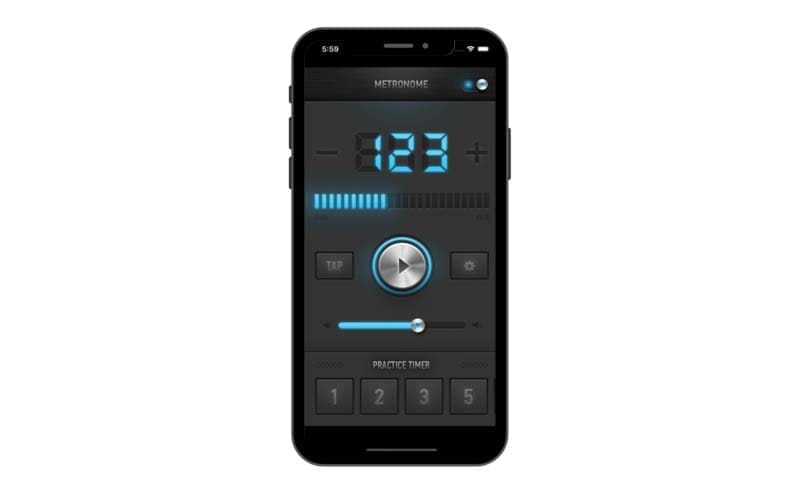
Digital metronomes have also been developed as standalone devices or incorporated into DAW’s (Digital Audio Workstations) like Pro Tools and Logic to help ensure that recordings are perfectly in time and electronic drums also have them built in as a coaching tool for musicians. These days you can even buy wearable metronomes that deliver a physical pulse directly to your wrist rather than having an annoying sound that can be picked up microphones when played through headphones.
The big advantage of a digital metronome or metronome app is that rather than a simple click sound, you get a different tone that indicates the first beat of the bar – so you know if you are dropping any full beats but remaining with the pulse – this is particularly useful for when you are practicing fills.
How To Use A Metronome
Believe it or not, there are actually a few different ways to use a metronome to improve your playing and recording. Here are some top tips:
#1 – What is 4 4 time on a metronome? Using compound time signatures.
Old-school mechanical metronomes are pretty one-dimensional in that they only give you a simple click at a specific BPM. So whilst there’s no specific time signature like 4/4, you just pick the beat and try and stay with it. This works really well if you are working with straight time signatures like 3/4 or 4/4, etc.
However, it becomes a little more complex when you try to use compound time signatures like 6/8 or 12/8. If you’re using a mechanical metronome and you want to play to a 6/8 time signature, you need to do some silent counting in your head. Set the click speed to a slower tempo so you get 1…2…1…2… then in your head, turn those individual clicks into triplets – I.e: 1 (2, 3) 2 (2,3)
Of course, one of the main advantages of a digital metronome is that not only do you have a different tone that indicates the first beat of the bar, you can also configure the click to match different time signatures, so you can program in 6/8 or 3/4 , etc.
If you are using a metronome that is part of a DAW for recording, you also have the advantage of being able to program the metronome which gives you loads of flexibility if you have songs where the tempo changes, or where there are strange or irregular bars.
#2 – Recording perfectly to time

In a recording studio situation, the metronome is typically built into the DAW (Digital Audio Workstation – software like Logic or ProTools). One useful trick is to set the metronome to be twice the speed of the song – for example, if your song is 180 BPM, setting the metronome to 360 makes it easier for musicians to follow whilst laying down tracks and it also means that any natural drift in time between beats is at an absolute minimum because the click track is harder to deviate away from.
#3 – Building up natural Rhythm.
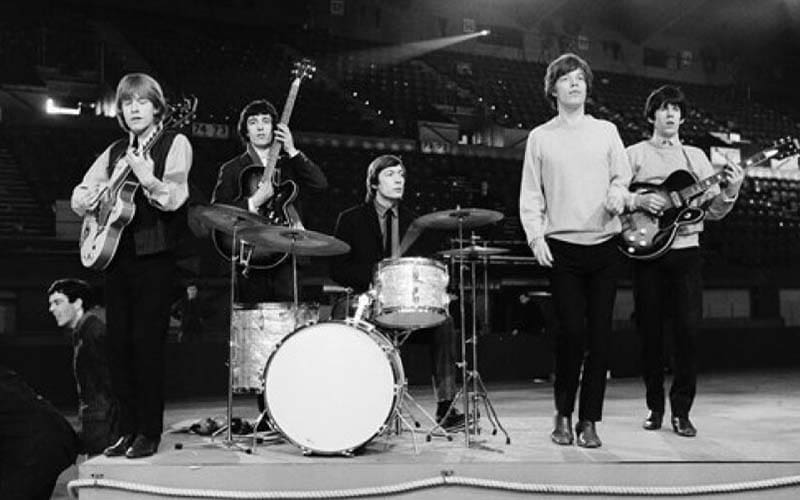
I will preface this statement with the caveat that this technique is not for the faint-hearted. However, it does allow you to build up your natural sense of rhythm and can prove to be very useful when you are part of a rhythm section in a jazz or more free-form improvisational outfit.
The syncopated metronome technique is often taught at degree/diploma level to drummers and bass players looking to progress their skills beyond Grade 8 level. The exercise involves setting the metronome to half the speed of your performance piece. So if you are playing a piece at 180 BPM, the metronome should be set at 90.
You then treat the metronome clicks as the 2 nd and 4 th beat of the bar (if you are in 4/4). When you are listening to a click, this can be a very difficult thing to do as your brain naturally puts the click on the 1 st beat of the bar, so the trick is to let the click run and count:
2…4…2…4…
Then in your head insert the 3 and then the 1:
2…4…2..(3)..4…(1)…2…(3)…4….
And begin your practice.
You might be reading the above exercise and thinking what kind of metronome users need to make it so difficult?! And you’d be right, this exercise is particularly challenging – but it improves your natural sense of rhythm and time-keeping and also teaches you to absorb the time count without being a slave to it – so if you are in a band and the drummer comes in off time, you know where the beat should be and you can stay true to the song and keep everyone together. So the benefits of mastering this technique are very significant.
What Is The Best Metronome?
#1 – The Metronome by Soundbrenner

The Metronome is an iOS and Android app that is available for free and is hugely powerful. It won a best in show award at NAM and is the highest rated metronome app on the Apple App Store.
The app has a beautiful interface and some really cool features including over 20 different metronome voices and you can also totally customise the rhythms to create different accented notes. You can even set the app to flash if you’re in a live environment.
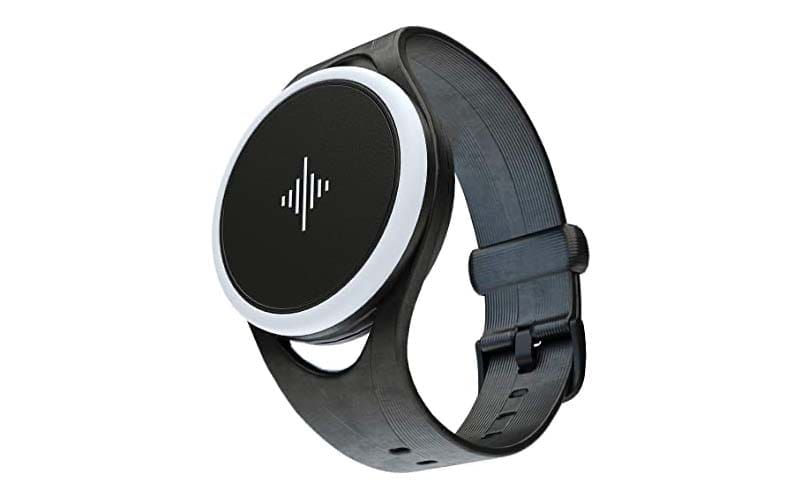
Not only is the app super solid in terms of it’s counting – SoundBrenner have also developed a range of wearable devices that include a metronome. Their Pulse product is a vibrating metronome that links to the App and can be worn on the wrist, thigh or any other part of the body you like.
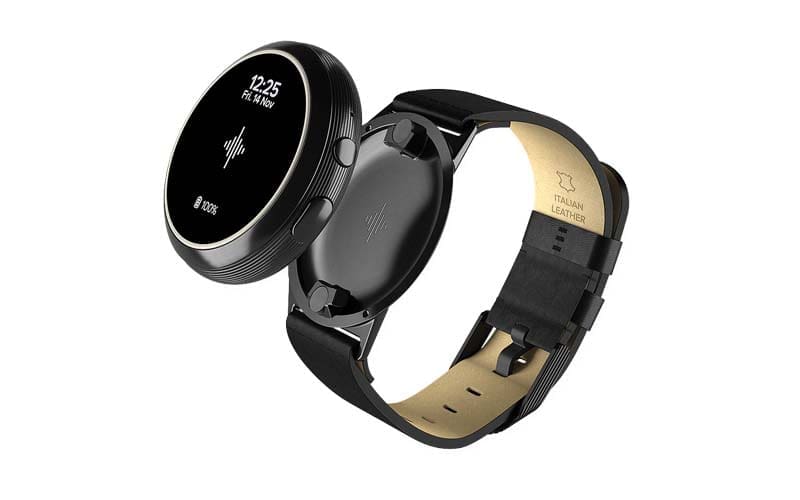
And if you were wondering what is a guitar metronome – it’s SoundBrenner’s Core. The Core is a vibrating/flashing metronome, dB meter, guitar tuner and smart watch that can be worn on the wrist or connected to the headstock of a guitar – they’ve literally thought of everything.
#2 – Tama Rhythm Watch Mini.
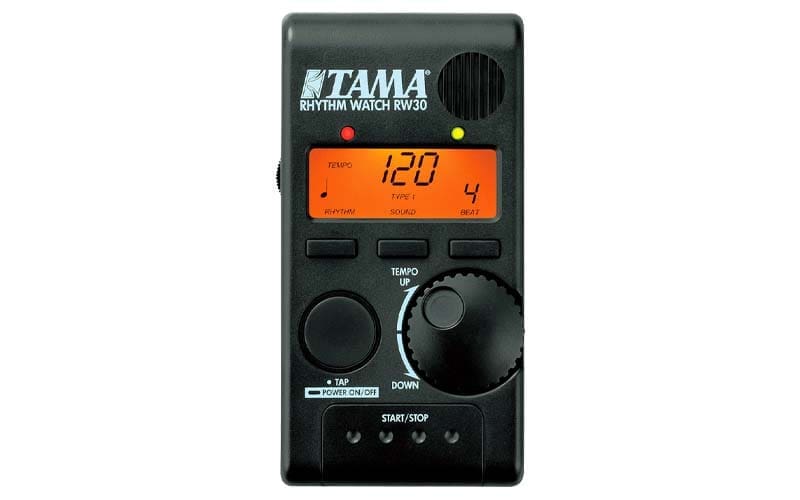
Designed for Drummers, Bassists and Guitarists in high noise environments, the Rhythm watch is a digital metronome where you can configure the tempo and time signature on the device and then clip it using the handy clip on the back to any surface. Rather than clicks, the Rhyhtm Watch Mini uses flashing lights so can be used on stage or in the studio without generating any unwanted noise or being drowned out by the band.
#3 – Witter Taktell Piccolo Metronome

Although the classic mechanical metronome has been slightly overshadowed by the more modern digital equivalents, there is still a place for simple, functional timekeeping (especially in more classical environments) and this metronome is very functional and looks fantastic with a range of different colours to choose from. It can also cater for a range of different time signatures so is a real improvement on the old school mechanical models.
That Was Our Guide To Metronomes!
Although the humble metronome is perhaps not the most exciting tool in a musician’s toolbox – they are an incredibly useful tool in building out the fundamental skills involved with being a top class musician. It’s easy to under-estimate the power of the metronome but there’s a reason metronomes have been popular amongst musicians learning their craft for the best part of 3 centuries and that is that they improve your musical ability. The best advice we can offer is that you go and give it a try and see what benefits the practice yields to your timekeeping.
For musicians and producers an online metronome tool is essential when recording, try Music Gateway’s online metronome tool here.
Are You A Musician Or Artist?
Get Free Music Distribution and find opportunities to get your music in film, TV, and more through sync licensing. Plus get Music Supervision, Music Publishing, Music Marketing, Artist Development and utilize our Free Artist Websites and Rap Name Generator. Finally, you can amplify your music to those that need to hear it with music promotion, TikTok promotion and professional sharing tool. Why not give the gift of music today with our Gifts for musicians package?
Try all of this out for yourself by joining Мusic Gateway. Get your free trial, no strings attached.










